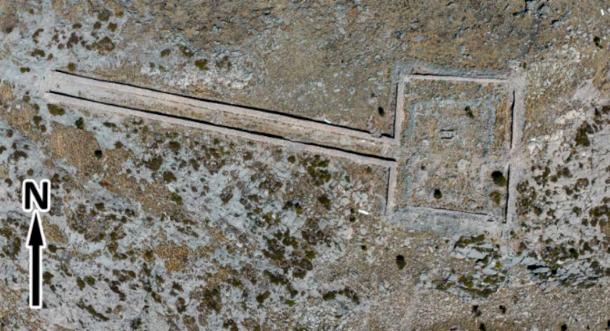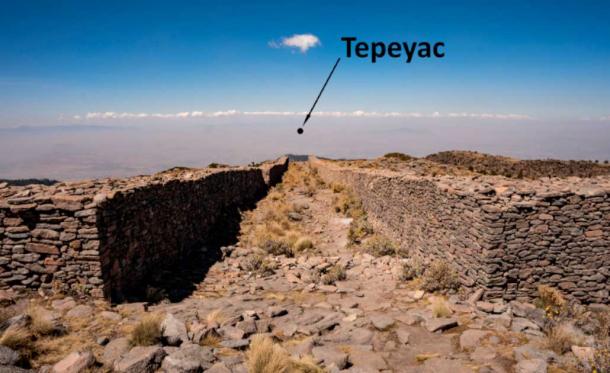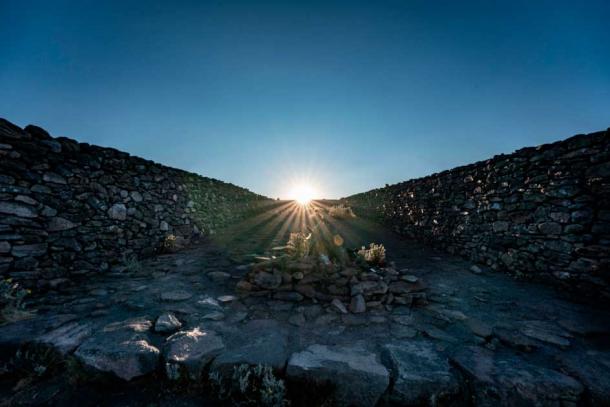
Aztec Observatory Temple Reveals Ancient Calendar Secrets
Archaeologists in Mexico have always wondered how sky watchers tracked the sun over time to maintain their farming calendar. Now, a new paper demonstrates how Mexica temples were used, with entire mountain ranges as observatories.
In 1519 AD, Spanish conquistadors arrived in the Basin of Mexico’s agricultural heartlands, now known as Mexico City, which was a thriving ancient metropolis that fed and housed around three million Mexica, or Aztecs. Supporting such a hungry city through dry springs and summer monsoon rains required advanced agricultural systems and technologies to capture, store, and channel water.
To do this successfully, Aztec agriculturalists had to predict seasonal changes so that growing terraces and irrigation ditches could be prepared in advance. If the Mexica had, in one single season, planted or harvested too early, or too late, there would be no Aztec civilization to write about. But how they did this successfully has always been unknown - until now.

The Aztec observatory on Mount Tlaloc has helped us understand how the Mexica created their calendars and organized their agricultural activities (Ben Meissner)
When Armageddon was always around the corner
Aztec astronomer-priests must have observed the sun to know which day and month it was within the year. Additionally, because of the Earth’s tilt, there exists a drift in the calendar compared to what actually occurs in the sky, called solar declination. This means Aztec astronomers must have adjusted their calendars for leap-years. Failure to have accounted for this could have resulted in crop failure and catastrophe.
Dr. Exequiel Ezcurra is a distinguished UCR professor of ecology at UC Riverside, who recently published a research paper in the Proceedings of the National Academy of Sciences. His team of researchers concluded that ancient Mexica sky watchers must have “stood at a single spot, looking eastwards from one day to another, to tell the time of year by watching the rising sun.” The paper demonstrates how such “a spot” might have functioned as an observatory.
- The Aztec Calendar Wheel and the Philosophy of Time
- Religion of the Aztecs: Keeping the Balance in an Unpredictable and Terrifying World

The view of Mount Tepeyac from Mount Tlaloc. This ancient Aztec observatory used nature itself as a time-telling tool (Ben Meissner)
Sinking Seeds on Aztec Holy Days
Looking to identify one of these “spots,” which must have been deemed as highly sacred, the researchers studied ancient Mexica manuscripts and found a reference to an observatory on Mount Tlaloc. This mountain and archaeological site in central Mexico is located to the east of the basin in the municipalities of Ixtapaluca and Texcoco, close to the state border with Puebla. Its use as a ceremonial site seems to date back to the 7th century AD.
A report in News UCR said that the research team ventured into the mountain ranges around the fringes of the basin for over a year before they identified “an ancient stone causeway” atop Mount Tlaloc. The archaeologists explored what turned out to be an Aztec temple, from which they took a series of geodetic and astronomical measurements. Astronomy software later processed the accumulated data and determined that the causeway “aligns with the rising sun on Feb. 24, the first day of the Aztec new year,” according to the paper.
- Sacrifice and Destruction: The Apocalyptic Aztec Creation Myths
- Nahuatl, The Language of the Aztec Nation

The ancient Aztec observatory at Mount Tlaloc was built to align with natural elements on solstices and equinoxes. Rising sun seen from the stone causeway on Mount Tlaloc in Mexico (Ben Meissner)
Decoding the Monumental Time Temple
Dr. Ezcurra said trained Mexica observers would have stood at the center of the temple. Then, using the peaks of the Sierra Nevada Mountains as indicators in what is essentially an open-air solar observatory, the sun was monitored rising and setting against the horizon, revealing the time of year. In conclusion, the new study says “the whole Valley of Mexico, the basin itself” was a functioning instrument.
Sixteenth century Spanish accounts speak of Aztec calendars, and the ground plans of almost all architectural remains correlate with the solstices, equinoxes, and other significant dates in the Mexica agricultural calendar. However, until this new study it was unclear how exactly Mexica sky watchers used the sun, mountains, and prominent landmarks to track passing time.
Essentially, groups of experienced sky watchers stood at the end of ritualized stone causeways, and when the sun rose from behind certain peaks and landmarks in the Sierras, they knew it was time to plant seeds and to harvest certain crops before frosts arrived. The temple causeway featured in the study is but one among hundreds of major temple observatories, and thousands of minor platforms, that were used across ancient Mexico for tracking the sun against the horizon to ensure accurate agricultural predictions, upon which life depended.
Top Image: This ancient Aztec observatory has allowed researchers to discern how the Mexico told time and planned their agricultural calendar. Source: Ben Meissner
By Ashley Cowie
References
Bernstein, J. December 12, 2022. Precise solar observations fed millions in ancient Mexico. University of California-Riverside News. Available at: https://news.ucr.edu/articles/2022/12/12/precise-solar-observations-fed-millions-ancient-mexico
Ezcurra, E. December 12, 2022. Ancient inhabitants of the Basin of Mexico kept an accurate agricultural calendar using sunrise observatories and mountain alignments. PNAS. Available at: https://www.pnas.org/doi/10.1073/pnas.2215615119
















Comments
Well, if you’re going to quarry stones and construct something big and impressive, of course you would think to align it with annual solar paths. All it takes is putting up a pole and marking the extreme positions at the solstices and equinoxes. Doesn’t require any other knowledge.
That said, who built the complex? Not the Aztecs – they were neither stone masons, nor metal workers, as the Spaniards noted. All that stuff MUST have been there when they arrived. But the origin of the long calendar remains a mystery.
Nobody gets paid to tell the truth.